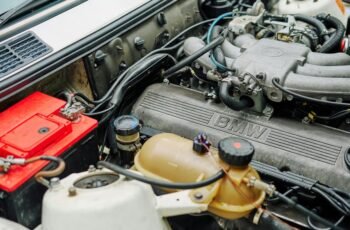You probably don’t know that many LiFePO4 cells arrive slightly imbalanced and need a controlled top-balance before you wire anything. If you skip that, your BMS works harder and capacity drops fast. You’ll plan for inverter losses, pick the right busbar thickness, and size fuses to interrupt fault currents, not just handle load. You’ll also face permitting hurdles and labeling rules. Get these right first—then you can decide how to wire, test, and commission safely.
What LiFePO4 Is and Why It’s Ideal for Home Energy Storage
Even if you’re new to battery tech, LiFePO4—lithium iron phosphate—is straightforward: it’s a lithium-ion chemistry prized for stability, safety, and long cycle life. You get cells that resist thermal runaway far better than cobalt-based chemistries, so they’re safer in homes. That safety combines with strong LiFePO4 advantages: flat discharge voltage for steady power, high charge/discharge efficiency, and minimal capacity fade across thousands of cycles.
For solar storage, those traits translate into predictable daily cycling and lower replacement costs. The typical LiFePO4 lifespan often exceeds 3,000–6,000 cycles at 80% depth of discharge, meaning a decade or more of reliable service. You’ll also appreciate wide operating temperature tolerance, rapid charging, and low maintenance. Choose LiFePO4 when you want efficient, durable, and safe residential energy storage.
Core Components: Cells, BMS, Busbars, Enclosures, and Inverters
Blueprint first: a reliable home battery starts with matched LiFePO4 cells, a smart BMS to protect and balance them, solid busbars to move current safely, a fire-resistant enclosure to contain and cool the pack, and an inverter to turn DC into household AC. You’ll choose cells types (prismatic or cylindrical) based on space, current demands, and ease of assembly. Prioritize tight capacity matching.
bms functionality matters: it monitors voltage, current, and temperature, balances cells, and enforces cutoffs. Size busbars for expected amps and surge; use copper or tinned copper with proper torque and insulation. Enclosures should vent heat, withstand knocks, and organize wiring. Select an inverter with surge headroom, low idle draw, and communication options.
1) Cells: format, capacity, C-rate
2) BMS: limits, balancing, telemetry
3) Power path: busbars, enclosure, inverter
Safety, Code, and Permitting Essentials for a Compliant Build
With components picked, you need to build to code so the system stays safe, insurable, and legal. Start with safety precautions: mount equipment on noncombustible surfaces, maintain clearances, add proper overcurrent protection, and install disconnects accessible to occupants and responders. Use listed equipment and torque lugs to spec. Provide ventilation per manufacturer instructions and secure wiring in conduit where required.
Next, verify code compliance against NEC articles relevant to energy storage systems and your inverter’s listing. Follow manufacturer installation manuals—they’re often part of the listing and enforceable.
Begin the permitting process early. Contact your AHJ to learn submittal requirements, fees, and inspections. Match plans to local regulations, including setbacks, working space, labeling, smoke/CO detector integration, and rapid shutdown if applicable. Keep documentation ready for inspectors and your insurer.
Sizing Your System: Capacity, Voltage, and Runtime Planning
Before you buy batteries, define what you want the system to do: ride through short outages, run critical loads overnight, or power the whole house off-grid. List each load, its watts, and expected hours. Multiply watts by hours for daily Wh, then include inverter losses and weather margin. For LiFePO4, assume 90–95% round-trip efficiency and 80–90% usable depth of discharge in your capacity calculation.
Pick a voltage selection that keeps current manageable: higher voltage reduces cable size and inverter stress. Match battery voltage to inverter specs and future solar or generator integration plans. Plan runtime by dividing usable Wh by expected load, then validate surge requirements for motors and HVAC.
1) Audit loads: watts, hours, duty cycles.
2) Size storage: Wh, DoD, efficiency, reserve.
3) Choose voltage: 12/24/48V based on current and inverter.
Wiring and Commissioning: Step-by-Step Setup and Testing
Although planning set the stage, wiring and commissioning bring your battery system to life with safe, methodical steps. Begin by isolating power, verifying polarity, and labeling every cable. Use proven wiring techniques: crimp with the right dies, torque lugs to spec, add heat-shrink, and route conductors with strain relief and grommets. Size cables and fuses to the inverter’s max current, and install a main disconnect and DC breaker.
Mount the BMS, connect balance leads, then series/parallel links. Verify pack voltage before tying in the inverter and charger. Follow a commissioning checklist: continuity test, insulation check, torque recheck, BMS settings (cell limits, temp cutoffs), inverter input range, and charger profile for LiFePO4. Energize stepwise, log voltages and temperatures, and perform a controlled charge/discharge test.
Conclusion
You’ve now got the roadmap to plan, build, and commission a safe, code-compliant LiFePO4 system. Size it smartly, wire it cleanly, and let a quality BMS watch your cells. Remember, a single 280 Ah cell stores roughly 900 Wh—about what a typical fridge uses in a day—so a modest bank can keep essentials humming through outages. Pull permits, follow manufacturer guidance, then test and label everything. Do it right, and you’ll enjoy quiet, resilient, long-lasting power.

